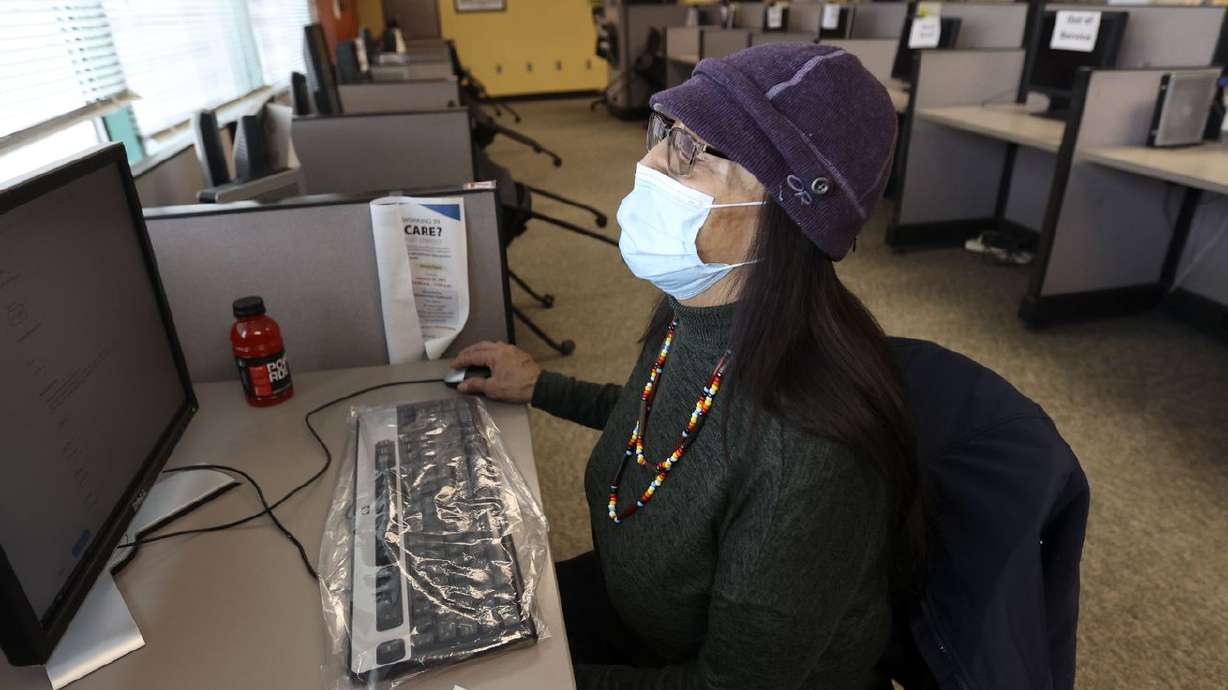Estimated read time: 3-4 minutes
This archived news story is available only for your personal, non-commercial use. Information in the story may be outdated or superseded by additional information. Reading or replaying the story in its archived form does not constitute a republication of the story.
SALT LAKE CITY — Thousands of people in the Beehive State continue to seek financial assistance as they look for gainful employment.
The number of total new claims filed for unemployment benefits in Utah registered at 4,548 for the week of Jan. 31 through Feb. 6, with 33,691 individuals filing continued claims during the same period. A week earlier, there were 34,752 continued claims filed.
"After a five-week increase in continued claims, primarily a result of the recent federal extensions to the unemployment benefits, last week we saw an overall decrease in continued, ongoing unemployment claims," said Kevin Burt, director of the state Division of Unemployment Insurance. "This is another of many indicators that Utah's economy is recovering and many employment opportunities are available."
This week's numbers showed a decrease in the amount of Pandemic Unemployment Assistance and extended benefits the agency doled out, but also showed a slight rise in traditional claims. Burt said the traditional claim increases are likely a result of the seasonal work being impacted by the recent weather.
"Historically, December to February have higher new claim numbers in Utah. In January, both (Pandemic Unemployment Assistance and extended benefits ) saw temporary volume spikes," he said. "The passing of the Continued Assistance Act provided an additional 11 weeks to those who had previously exhausted, resulting in unusually high volumes of new claims in January. So while both appear to be trending down in February, we believe it is more a normalization compared to an inflated volume in January."
The report indicated that continued claims seemed to decline a bit. Burt was optimistic that the shrinking numbers are likely an indicator of a possible seasonality trend to watch for in the near future.
"We hope so and hope it continues to be the trend. Again, the Continued Assistance Act resulted in increases in continued claims with the additional 11 weeks being afforded to those that had previously exhausted," he said. "The continued claims going down last week may indicate the peak of the increase from the new federal assistance act and a return to regular decreases as the weather improves and economic recovery continues."
Despite the optimism, the data still showed that new and continued claims continue to be quite elevated compared to historic averages. Burt said those numbers are concerning but economic improvement is not far away.
"While Utah's diverse economy has certainly done well as shown by the 3.6% unemployment rate, the pandemic does continue to be disruptive to employment," he said. "There continue to be industries that are struggling and unemployment can be used as a temporary help to individuals who are laid off from struggling industries that transition into industries that have been stable or have grown during this difficult time."
The continued claims going down last week may indicate the peak of the increase from the new federal assistance act and a return to regular decreases as the weather improves and economic recovery continues.
–Kevin Burt, director of Utah's Division of Unemployment Insurance
Nationally, the number of Americans seeking unemployment benefits fell slightly last week to 793,000, evidence that job cuts remain high despite a substantial decline in new confirmed viral infections, according to the Associated Press.
Last week's total declined from 812,000 the previous week, the Labor Department said Thursday. That figure was revised higher from the previously reported 779,000. The numbers point to a still-elevated number of layoffs. Before the virus erupted in the United States in March, weekly applications for jobless aid had never topped 700,000, even during the Great Recession.
The job market had shown tentative improvement last summer but then slowed through the fall and in the past two months has essentially stalled. In December and January combined, employers cut 178,000 jobs. Nearly 10 million jobs remain lost to the pandemic.
Thursday's government report also showed a sizable rise in the total number of Americans who are receiving jobless aid, including through extended benefit programs — a sign that long-term unemployment may be growing. All told, 20.4 million people were receiving benefits in the week that ended Jan. 23, the latest period for which data are available. That's up sharply from 17.8 million from the week before. Part of that increase likely reflects the processing of a rush of claims after the extension of two federal aid programs just after Christmas.










